MARTIALFORCE.COM
PRESENTS
“Latina Warrior”
An Interview with Shihan Candy “Warixi” Soto
Written by Lydia Alicea
Edited by William Rivera, Shihan
MARTIALFORCE.COM
ONLINE MAGAZINE
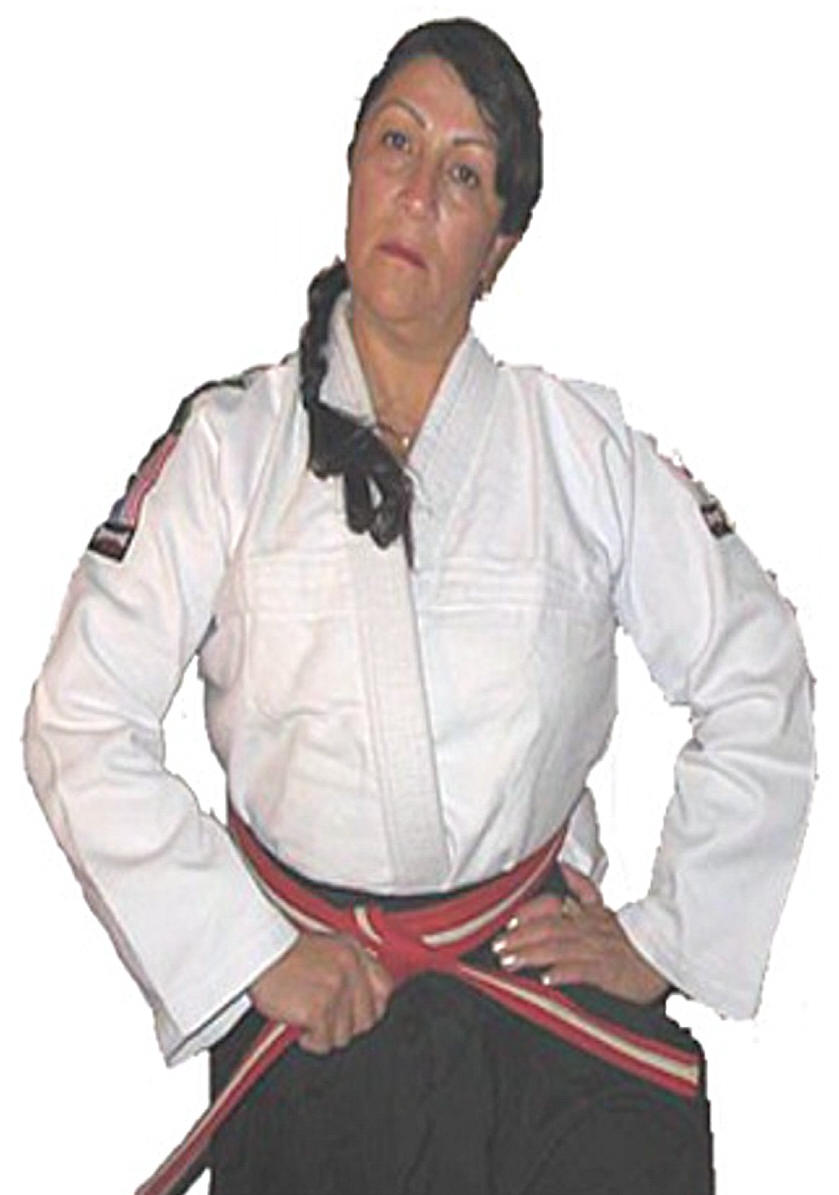
“I always knew that if I were to be attacked on the street it would by a guy who wanted to knock my head off. When my instructor would shout, “First row, turn around and face your partner”, I would make sure I was always paired with the baddest, hardest guy on the floor. Turning towards me he would say, “Oh no, I have to work out with this freaking girl!” It did not matter. I knew I had to earn my respect on the dojo floor to be prepared for that guy on the street.” Shihan Candy Soto – 2007
It is tremendously inspiring to meet individuals who have chosen to not only train in the martial arts, but also to dedicate themselves with blood, sweat and tears in making it a part of who they are. It is a road described as hard and difficult.
For anyone even if the martial artist is a woman. Yet, women who choose to train are still viewed with curiosity even by women. Although our laws are based on the principle that men and women are equal, reality often plays out differently. In the arena of the martial arts, particularly in competition, intentionally or not, men and women are placed side-by-side and compared on their strengths and attributes, weaknesses and limitations. Is this always appropriate, or should martial artists, regardless of gender, be assessed as having “something” on another level?
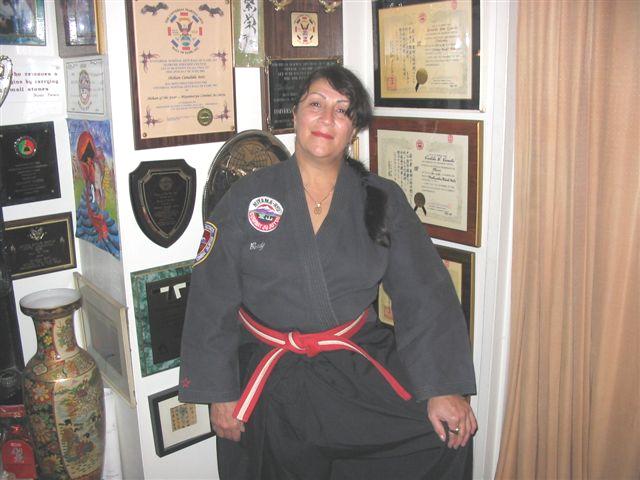
With that view, you might agree that indeed it does take “some kind of something” even for a woman to put herself out there, to battle not just the physical and brutal aspects of training but also the reality of standing out and being able to fit in.
Candy Soto Shihan has that “some kind of something”. She had it growing up in The Bronx more than thirty years ago but it was not yet realized. It was a strength cultivating long before she heard the word, Karate. It was a power developing as Candy grew up surrounded by spirituality, devoted to faith, rooted in her ancestry, Taino, and her culture, Boriken. When her parents came to New York from Puerto Rico, they made certain not to leave their traditions and customs behind, but to integrate them here in the U.S.
What Candy drew from these forces was teaching her how to survive and maneuver herself through the rough streets of the South Bronx. During the 1970’s, Candy knew she needed to be streetwise from the get go. She learned how as violence, drugs and gangs permeated life in many neighborhoods of the South Bronx. She feared being fearful and that is perhaps what drew her to basement karate, and later to Miyama Ryu and Professor Antonio Pereira Shihan.
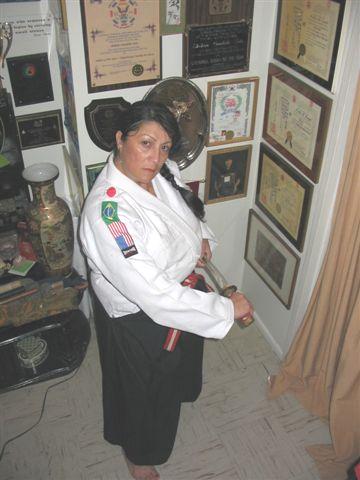
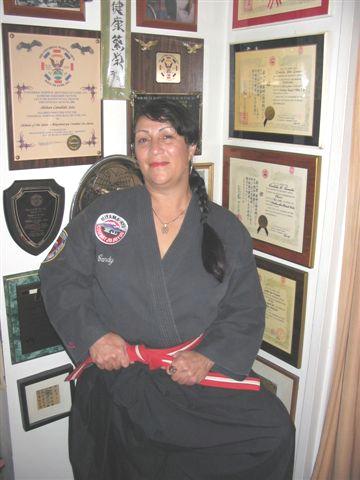
Candy Soto Shihan is considered by many as one of the highest-ranking females in the martial arts. She currently holds the rank of Kaiden in Miyama Ryu Combat Ju-Jitsu bestowed on her by its founder, the late Professor Antonio Pereira Shihan.
Her years in the martial arts spans more than 35 years. In addition to Miyama Ryu, Candy Soto Shihan has trained in Judo and in weapons such as the Jodo, Bokken and the Tanjo by instructors Gene James, Shihan Campbell and Michael Alvarez.
Once immersed in her training, Miyama Ryu broadened the scope of Candy Soto’s skills and abilities while providing the foundation needed not only in her art but also in her life. She is indeed, a true “Latina Warrior.”
Martialforce: How did the inner resolve to train in the martial arts develop? When did it begin?
C.Soto: “From the start, I decided that I was going to learn one way another. This determination came because of things I was drawn to such as basement karate, throwing knives with my stepfather or fighting with my brothers. Hey, this is what I liked!
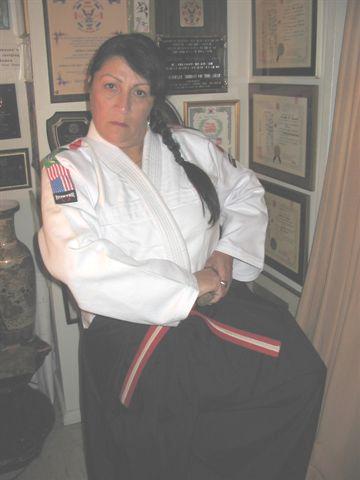
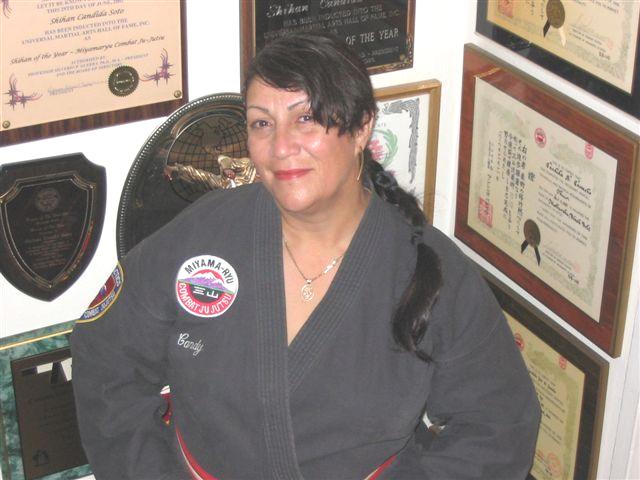
I remember getting into a fight with a girl about my age. Everyone around me was shouting, “She knows karate, she knows karate!” I wondered, “Who the hell was Karate?” A year later I learned that it was, a fighting style and that sparked my interest.
At age 15, I got involved in basement karate. It was organized and often practiced in someone’s basement sometimes at the Y, a school or a gym. Those who came were prepared to put out what they knew, whether it was judo, karate, or ju-jitsu, boxing or catch can wrestling. It was truly the original mixed martial arts before it coined into what it is known as today. Some guys came from different schools and some were street fighters.
“Regardless, many of us got hooked into basement karate from watching Bruce Lee or Sony Chiba. They were the legends of our time.”
It was something we did almost everyday. Very spontaneous, no equipment, no headgear used. All you needed was a group and you soon heard, “let me see how high you can kick” or “block this” or, “hey, look what I picked up today!’ Every practice provided us with a chance to learn something new, whether it was a kick or a punch. We learned a little bit from each other and you would practice, hey, sometimes wrong.
I wanted to train with a guy we called, “Black Belt Pete”. Pete taught Shotokan Karate in Queens, and I lived in The Bronx. He recommended a school where his sister and her husband trained not far from my neighborhood. So, I agreed to check it out. At that time, I did not know the difference between judo and jujitsu. What we did in basement karate was blocking, kicking, jumping around, or throwing a jab. To us, this was karate. The kung fu I knew, or thought I did, came as a result of watching Bruce Lee’s moves or Angela Mao’s kicks. How much they inspired me and how I wanted to do it like them!

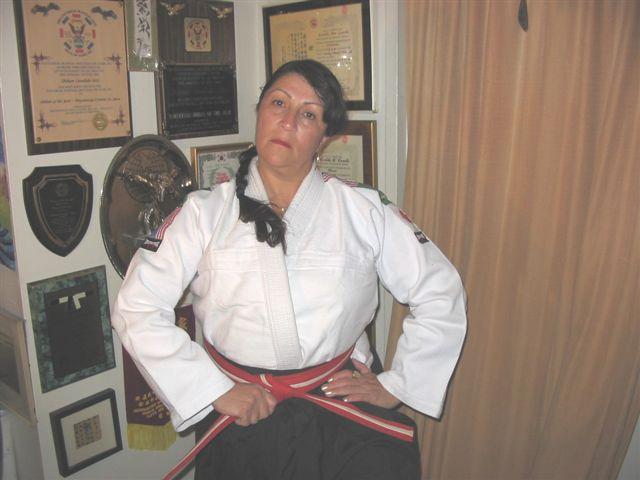
So, off I went to the school Black Belt Pete recommended. When I entered the dojo, there he was, “El Viejito”, Professor Antonio Pereira Shihan. As I watched the karate class in progress, he came up to me and said, “You are a little too old for that. Karate is for kids. What you want is ju-jitsu.” I was 23 years old and ready to begin my formal instruction.
In 1978, I began training in Miyama Ryu Combat Jujitsu. At the first class, I watched the students being led through a grinding work out which looked really intense. In a back room were two ladies who appeared to be in their 80’s. They were practicing what I later learned was Tai Chi. Not knowing what it was I thought to myself, “Mira, esas viejas estan loca” translated means, “those old ladies are crazy!” When I got back home, I took my gi and threw it up in the closet where I kept the winter blankets.
About two weeks later, I received a call from “El Viejo”, Professor Pereira. He said, “You signed up for classes and have not come back.” I told him I was sick, the only excuse I quickly thought of. Pereira responded, “Look, why not give it a chance, and if you do not like it I will give you your money back.”
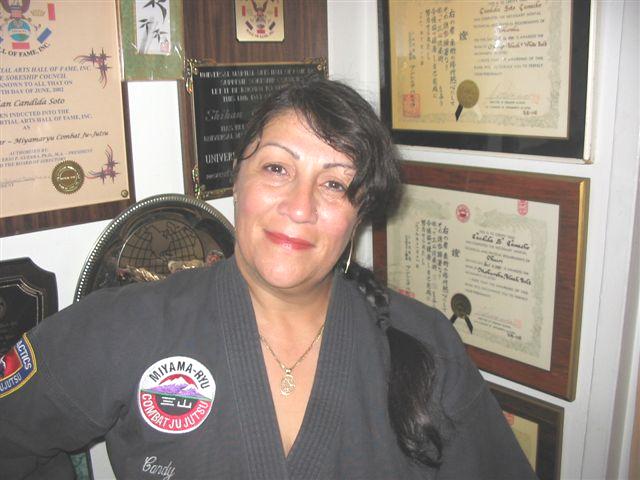
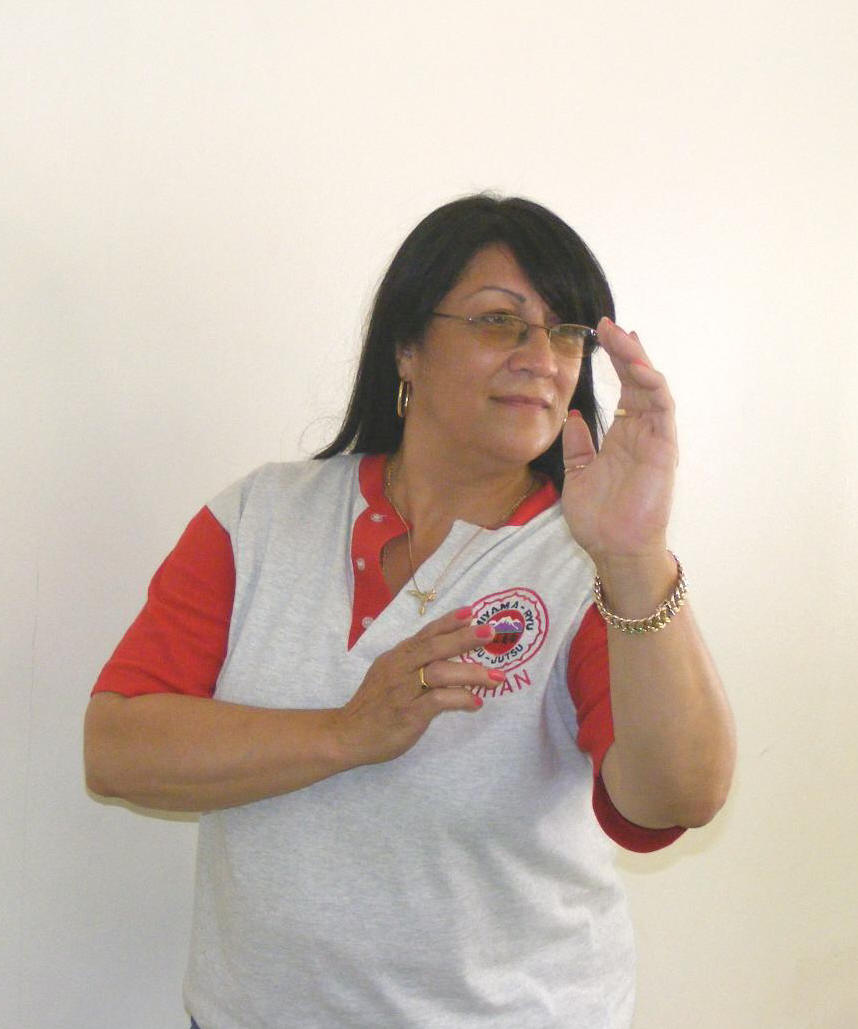
I got very excited because I was so sure I was not going to stay with it. Well, when I returned for my second class, it did not quite turn out that way. It was a little whacky at first with all the exercises and body positioning. Yet, it was incredible how quickly I fell right into it.
On the next day, back I went onto the mat to learn throws. It was a black belt class and the students were preparing to start. I had never taken a throw nor thrown someone. A black belt began showing me how to grab him. All of a sudden, he threw me and I landed on the mat like a baby. It felt so natural and I was not tense. I curled up and was very delighted in my experience when all of a sudden someone screamed, “What the hell are you doing? She is new and this is her first class!” Everybody was scared of Professor Pereira. As I stood up, I told him it was alright, in fact, I loved it!
When instruction ended, I went up to the Professor and told him, “You know, I am going to become one of your black belts.” He just smiled and replied, “All my female students say that.”

Martialforce: How did test for your black belt?
C.Soto: “In the test I needed to do everything that I learned. My brown belt took over 5 hours. In 1981 I received my black belt from Professor Pereira.”
Martialforce: Did you do breaking?
C.Soto: “No, Shihan said he never met a tree that did not like him.”
Martialforce: Were you involved in sports?
C.Soto: “Oh, most definitely. Fortunately, I had natural abilities like agility and flexibility which were positive reinforcements as I learned to swim, fight and play handball.”
Martialforce: What is the appeal of Ju-Jitsu?
C.Soto: “Ju-Jitsu has a little bit of everything, joint locks, ground work, kicks, and punches which can be quite comprehensive according to who teaches it. Miyama Ryu has the added element of street fighting.”
Martialforce: Do you have kata in your style?
C.Soto: “We do the judo kata based on the Kodokan kata. Professor Pereira created Miyama Ryu Combat Ju-Jitsu during a time when violence was rampant on many of streets in the city. He designed the art in response to an ever-growing need in dealing with criminal activities like muggings, killings and rape.
Professor Pereira Shihan was a true martial artist who cared deeply about the arts and the influence it could have on people’s lives. He never cared about the business aspects or how many students were enrolled. His standards were high and insubordination was never tolerated.”
Martialforce: Describe training in Miyama Ryu.
C.Soto: “Discipline is learned through movement. In your first lessons, you learn how to pick up someone. You also learn how to fall, roll and of course tai sabaki which includes the kicks and punches.
We teach core movements that build up to tai sabaki, the foundation. Without it, you cannot do anything else. In tai sabaki, we work against each other learning how to avoid a punch. Every style has its own appeal and it cannot be said that one style has it all. Each has its unique features and appeal. Miyama Ryu included blocks, throws, chokes, arm bars, hair pulls and knife techniques. Within Miyama Ryu, we learned the aikido circular moves. You can also see the punches the palm heels, the body positioning. For a woman or someone small it is excellent.
What makes Miyama Ryu different is that it is genuine to real life encounters with the added element of street fighting. In many ways, it is not so much about the technique but rather the application. What your opponent cannot see will determine if he can continue an attack. That is the essence of street tactics and it cannot be used in sparring or in an arena like the UFC.”
Martialforce: How are potential legal implications in martial arts practice addressed?
C.Soto: “Today you must teach people what to say. If you have to hurt someone, you do not say he deserved it; instead, you say, you were in fear for your life, because it is all about self-defense.
Also, a martial artist must always exercise a strong sense of self-control and avoid compromising situations. If you need to use your art, fine, just do not overkill. Shihan Pereira was adamant about using restraint, and he never liked any art that stressed excess. A drunk comes towards you, just push him aside, there is no need to stomp on him.
As students, we would attend demonstrations and see someone being taken down not just with a hit but with elbows as well. Often competitors get carried away and cross a line. They need to think.”
Martialforce: Tell us about your self-defense program.
C.Soto: “Years ago, I founded “Female Alternative Street Tactics” (FAST). It is a violence prevention program where the emphasis is on avoidance of various forms of attack or confrontation. What I teach women is more of an urban survival program, techniques they can learn fast and use with minimum effort for maximum effect.
These are moves that can save them against a mugger, a rapist or a thief, with a palm to the nose or a gauge to the eye, or using every day items to stop an attacker. I have women in my classes that may never had trained or exercised one day in their entire life. Many do not have the time or the interest to go to a dojo and learn traditional martial arts. I do encourage students to study a martial art and attain at least a yellow belt level of training.
It is impossible to take them from white to black belt in four hours. I tell the women who take my program that if they do not practice they will not be prepared. Basically, self-defense is 85% street awareness.
It is a misnomer to teach somebody that by just having a knife or something in your hand you are safe. Not true. I have had women who come to my program and I am amazed by the things they have been taught in other self-defense classes. One student showed me a move against a wrist grab that involved using multiple moves, something that would take practitioner years to perfect. Another potential mistake women make is carrying their bags over their shoulder. A thief can pull the bag, rip your shoulder and take it with everything in it. I tell women to use common sense. Simply, do not carry your life in your bag. It is better that he takes your bag with just your lipstick and brush and not your credit cards, photo id or car keys.
I stress to women the importance of avoiding situations by being aware of their surroundings at all times. I can open up a martial arts school if I want to, but I would not be reaching as many women that need me.
Lastly, I tell my students to go home and continue to practice, practice and practice with their brother, sister, cousin, father, husband or partner.”
Martialforce: You also teach a child awareness program. Tell us about it.
C.Soto: “I am the director and co-founder of “Secure Your Child” (S.Y.C.). It is an anti-child abuse program that teaches children and their parents about street awareness, kidnapping prevention, anti- bullying techniques and self-defense for ages 4 to 12. I have taught SYC throughout New York City for more than 20 years, largely through school programs.
In the first part of the SYC program, we talk about what self-defense is and awareness of one’s surroundings. We approach students through different topics for discussion such as kidnapping, safety in the home, at school and in the playground.
The second part focuses on the tactics of self-defense. We do judo moves so that the kids know what it is like to be on the ground and how to fall. We do descriptive role-playing so that a child learns how to describe someone who is coming after them or watching you, or objects such as vehicle and its location.
We also show kids how to escape from someone who is attempting to pick them up, grab or hold on to them. Our self-defense classes deal with real situations as they might occur on the streets, in the home and in schoolyards or playgrounds.
I designed this program because I saw that there were schools teaching martial arts with no street awareness training. This can be a problem for a kid who comes away with a high level of self-confidence as a result of training or competition, but does not know how to apply it to real situations he would encounter on the street, in school or even at home.
The need for awareness has no boundaries. I give the same message to kids in schools up in Harlem or in private schools such as The Dalton School and Town School in Manhattan.”
Martialforce: Are women intimidated by the martial arts?
C.Soto: “Of course they are! It is still male dominated with hard and ruff elements that many women would prefer to avoid. If this perception of the martial arts could be replaced with a better understanding of what it is without watering down the training aspects, we have a better chance of reaching a broader scope of women. I believe it is taking place gradually, but its benefits need to be better understood as we see more women training in the martial arts.”
Martialforce: Shihan, you hold the distinct honor as head of the Tanama Taino tribe. As representative, Behike, Shihan Candy Warixi Soto, you have dedicated your life to promoting the Taino culture, raising awareness of its heritage and bringing unity and understanding amongst the Taino communities. How does your work contrast with the many years you have also dedicated to the martial arts?
C.Soto: “It is interesting how life brings you full circle. My father grew up in “El Barrio” of New York, and although he later traveled around the world as a merchant marine, he still stayed connected to his Taino roots by attending underground meetings in El Barrio. I was taught about our Taino customs as a young girl by my parents. Later in my life, I was able to apply what I learned. I chose a path that led to important work such as organizing spiritual meetings and writing about the issues that affect our communities.
From my martial arts training, I have learned how to hurt, to injure, and to kill if necessary. At the core of Taino principles is peace and nonviolent means to achieve an end. It has taught me about the importance of attaining balance in life as well as in the spirit of the martial arts.
Even the samurai needed to make time to stop and view the cherry blossoms, to watch and smell the smoke. To be good you need balance.”
The following are some of Master Candy "Warixi" Soto,s many achievements:
-
In 2005, recipient of Budo International’s 1st Hall of Fame, “Woman of the Year” award.
-
In 2004, recipient of "Keeper of the Lost Art Award". Inducted into The United States Martial Artists Association's Hall of Fame" as "Grandmaster of the Year 2004" in Miyama Ryu Ju-Jitsu .
-
In 2003, inducted into The Universal Martial Arts Hall of Fame as “Woman of the Year". This was her 3rd induction.
-
In 2001, named "International Shihan of the Year”.
-
Nominated into The World Union of Sokes Hall of Fame as the “Judo/Ju-Jutsu Instructor of the Year.”
· Soto Shihan is a member of the True Force International Martial Arts Alliance.
· She received her PhD. In the Martial Arts from NDCMA.
· The first woman on the Board of The Universal Martial Arts Hall of Fame.
· Member of the Miyama Ryu U.S. Board and the Secretary of the Miyama Ryu International Board.
Candy Soto Shihan is a martial artist who continues to set goals for herself by taking from her experiences and skills, and working on efforts that give back, whether on a personal level or for students who can derive benefit, the young and the old, women or gentlemen. Candy Soto Shihan also writes poetry and books in her spare time. Her poetry has been published, and she is concentrating on writing a series of children’s books that incorporate the teachings of her S.Y.C. program as well as a street awareness handbook for women.
We wish to extend our gratitude to Master F.A. Lugo, head instructor of the Back Belt Fitness Center, in Woodside, New York for allowing us to interview Soto Shihan at the Center. Please visit his site: blackbeltfitnesscenter.com.
To learn about the Secure Your Child (S.Y.C.) or the Female Alternative Street Tactics (F.A.S.T.) programs, or Miyama Ryu Combat Ju-Jitsu, please contact Shihan Candy Warixi Soto at shihan@rock.com.
Martialforce: Thank you for this interview and we
wish you the best in all your endeavors.